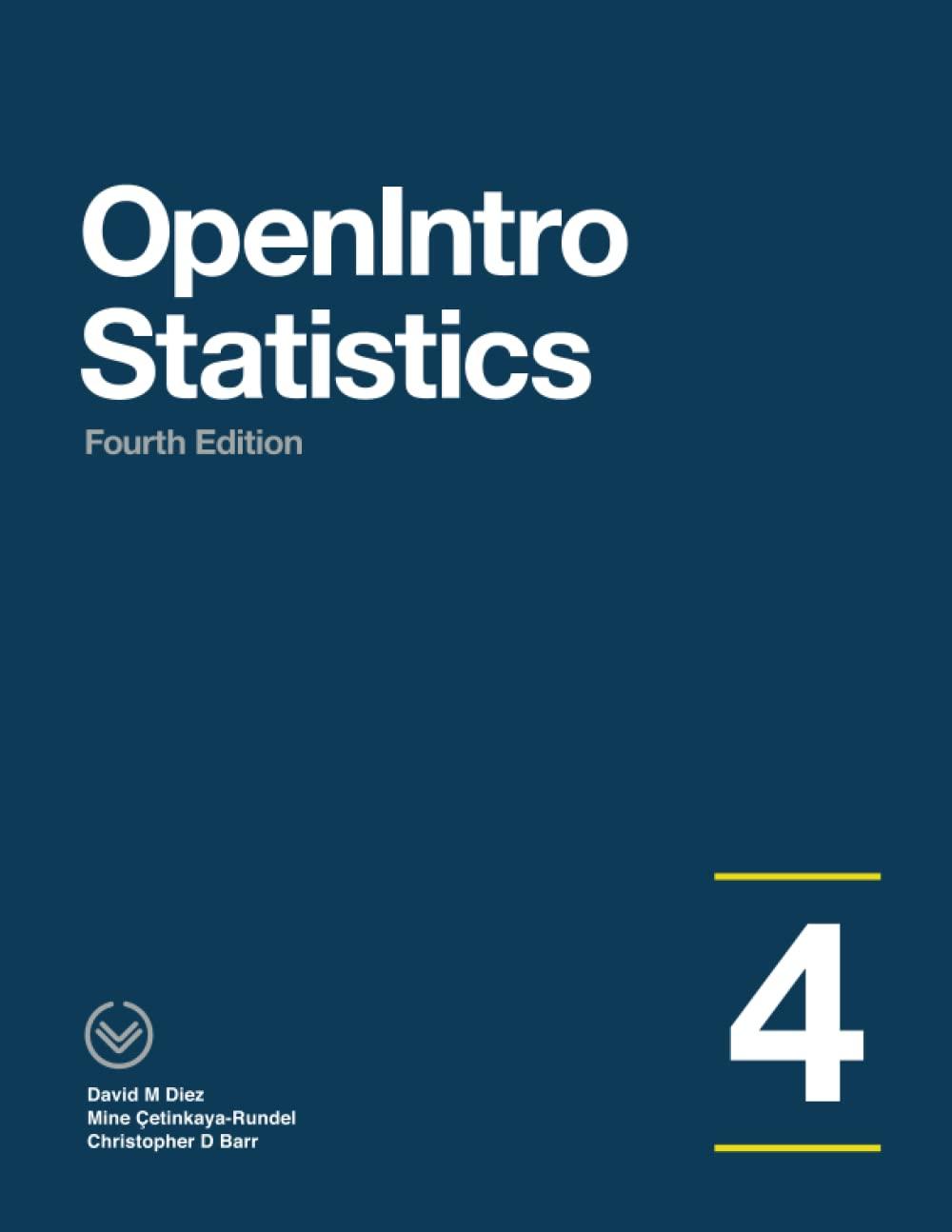At a startup company running a new weather app, an engineering team generally runs experiments where a
Question:
At a startup company running a new weather app, an engineering team generally runs experiments where a random sample of 1% of the app's visitors in the control group and another 1% were in the treatment group to test each new feature. The team's core goal is to increase a metric called daily visitors, which is essentially the number of visitors to the app each day. They track this metric in each experiment arm and as their core experiment metric. In their most recent experiment, the team tested including a new animation when the app started, and the number of daily visitors in this experiment stabilized at +1.2% with a 95% confidence interval of (-0.2%, +2.6%). This means if this new app start animation was launched, the team thinks they might lose as many as 0.2% of daily visitors or gain as many as 2.6% more daily visitors. Suppose you are consulting as the team's data scientist, and after discussing with the team, you and they agree that they should run another experiment that is bigger. You also agree that this new experiment should be able to detect a gain in the daily visitors metric of 1.0% or more with 80% power. Now they turn to you and ask, "How big of an experiment do we need to run to ensure we can detect this effect?"
(a) How small must the standard error be if the team is to be able to detect an effect of 1.0% with 80% power and a significance level of α = 0:05? You may safely assume the percent change in daily visitors metric follows a normal distribution.
(b) Consider the first experiment, where the point estimate was +1.2% and the 95% confidence interval was (-0.2%, +2.6%). If that point estimate followed a normal distribution, what was the standard error of the estimate?
(c) The ratio of the standard error from part (a) vs the standard error from part (b) should be 1.97. How much bigger of an experiment is needed to shrink a standard error by a factor of 1.97?
(d) Using your answer from part (c) and that the original experiment was a 1% vs 1% experiment to recommend an experiment size to the team.
Step by Step Answer:

OpenIntro Statistics
ISBN: 9781943450077
4th Edition
Authors: David Diez, Mine Çetinkaya-Rundel, Christopher Barr





